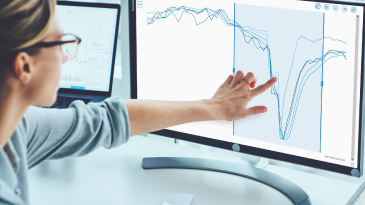Because time is money! The dictionary suggests an event is a noteworthy happening, or possibly a singular outcome. In manufacturing events are usually the “NOT OKAY” conditions. For example, a signal from a differential pressure sensor suddenly oscillates without warning and with no real indication of why it is happening. Very quickly such an event can snowball and become a serious high-cost issue with potential damage to processing equipment, fugitive emissions and safety concerns.
The commotion during an event can highly stress the front-line-worker, such as the Distributed Control System (DCS) operator, and a response must be quick and accurate before the situation gets out of hand. All too often such staff may lack the advanced skills and proper tools to rapidly understand the source of the disturbance event and promptly stabilize the operating conditions. In the past this meant much time pecking and poking through myriad trend charts trying to see where and why the event started, which takes too much time and rushes decisions that may be guesswork or ill-advised.
This is where Aspen Event Analytics (AEA) application makes a huge impact, focusing on both the happening itself and the outcome. In other words, what’s the event “window” and what’s the action to take for the most appropriate response? Using AEA is just like logging onto a sales website such as amazon.com. No local install of analytics software, just the browser such as Google Chrome or Microsoft Edge. Once logged on, the application is self-directing and simple to follow.
Similar to a calendar meeting event, AEA constrains a manufacturing event with a start time, an end time and a number of participants. Not seeking precision, AEA asks for the approximate time the event occurred and the participants – tagnames of the sensors most likely to be involved. The user need know nothing about analytics because the expert is “in-the-box” – like a smartphone, it does the technical work inside. Analytics execution is automatic, searching and setting up a window for the event showing trend lines for the tag values involved. The user can tweak and tune the window size, the tags included, etc. But the real key and the magic is that the user does not need to know what he/she is looking for because the application already has embedded smarts for detecting comprehensive event characteristics.
The AEA engine uses extreme advanced pattern and shape recognition to identify and visually correlate trends that matter and presents the results for user confirmation. Additionally, the user can help out by adding specific process behavioral facts to fine tune the automated analysis. There’s no peck-and-poke in random trend charts. AEA can dismiss those trends that have no bearing and point out the ones really matter. This happens in minutes, not hours or days, presenting a clear picture of the key event components and their precise correlation – the event signature. Now, the operator has the understanding and insight to take rapid, proper action.
That’s not all. When AEA establishes a specific disturbance event signature, it can search the archives to find all instances of similar past events and create an all-inclusive behavioral signature which also includes the specific corrective action. That signature becomes the heartbeat of an AEA Event Agent, which now goes online in real-time to warn without delay if the event recurs – besides delivering prescriptive advice to correct and minimize any process upset.
In summary, AEA gives the operator the right easy-to-use tool, with self-service analytical heavy-lifting built-in, to save time identifying and correcting events that might otherwise lead to disaster. After all, time is money!
For more information on Aspen Event Analytics, read our latest white paper: Empowering Operators and Frontline Process Engineers with AI Powered Operational Analytics.


Leave A Comment